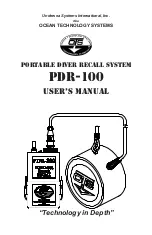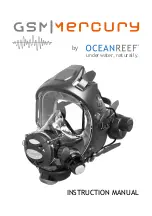
50
This type of recording is conceived for long-duration measurements, such as studies of
environmental noise and traffic noise, which require detailed spectral information concerning
average noise levels.
•
125 ms functions
: save every 125 ms the following 'short' functions:
o
L
T
with 125 ms consecutive integration time for each of the one-third octave
bands centred on frequencies 20, 25, 31.5, 40, 50, 63, 80, 100, 125, 160, 200,
250, 315, 400, 500, 630, 800, 1000, 1250, 1600, 2000, 2500, 3150, 4000,
5000, 6300, 8000 and 10000 Hz
•
T + 125ms functions
: save every 125 ms the '125 ms functions' and every T the 'T
functions'.
These 2 types of recording are specially designed to obtain highly detailed temporal and
spectral information, and are ideal for the detection of tonal components.
•
L
T
(+) each T
: once each integration period T has come to an end, the following values are
stored in the memory:
o
L
T
for each of the one-third octave bands centred on frequencies 20, 25, 31.5,
40, 50, 63, 80, 100, 125, 160, 200, 250, 315, 400, 500, 630, 800, 1000, 1250,
1600, 2000, 2500, 3150, 4000, 5000, 6300, 8000 and 10000 Hz
This kind of recording coincides with T functions.
The following table shows the storage capacity of the different types of spectrum analyser
1/3 mode recordings:
Type of recording
Storage capacity
T functions and L
T
(+) each T
T=1 s
Î
13 days 15 hours
T= 1 min
Î
2 years 3 months
125 ms functions
1 day
17 hours
T fun 125ms
T= 1 s
Î
1 day
12 hours
T= 1 min
Î
1 day
16 hours
T= 1 hour
Î
1 day
17 hours
The storage times for each type of recording correspond to one single recording, until the
memory is completely full.
The SC310 has enough capacity for up to 1000 registers (final results or recordings) of
whatever type.
When the built-in memory is full, no more recordings may be made and no more final results
saved. If you attempt to do this, the 'MEMORY FULL' message will appear on screen. If the
memory reaches its maximum capacity before a recording has finished and the CIRCULAR
MEMORY option is inactive (see 3.3.4), data recording will stop, although measurement will
continue. When the measurement is complete, the final result will be stored in the memory.
















































